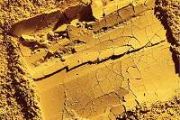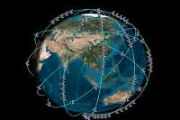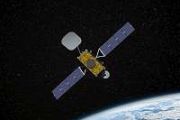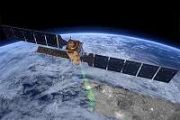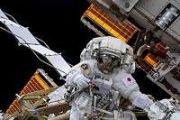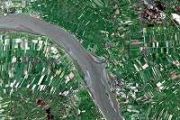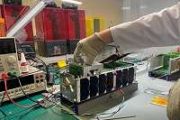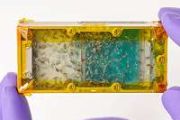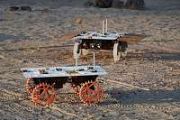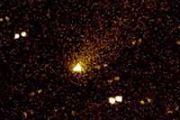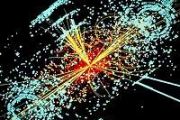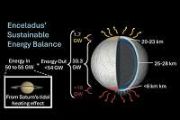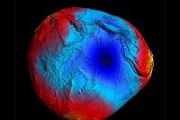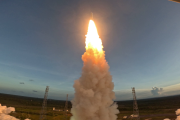
Copernical Team
Latest launch marks 64th mission for China in 2022
 China launched a Long March 3B carrier rocket on Thursday afternoon to transport an experimental satellite into space, completing the busiest year in terms of launch numbers for the country's space industry.
The rocket blasted off at 12:43 pm at the Xichang Satellite Launch Center in Southwest China's Sichuan province and then deployed the Shiyan 10-02 experimental satellite into a preset
China launched a Long March 3B carrier rocket on Thursday afternoon to transport an experimental satellite into space, completing the busiest year in terms of launch numbers for the country's space industry.
The rocket blasted off at 12:43 pm at the Xichang Satellite Launch Center in Southwest China's Sichuan province and then deployed the Shiyan 10-02 experimental satellite into a preset Artemis I Orion spacecraft returns to Kennedy Space Center
 After its 1.4-million-mile mission beyond the Moon and back, the Orion spacecraft for the Artemis I mission arrived back at NASA's Kennedy Space Center Dec. 30. The capsule splashed down in the Pacific Ocean on Dec. 11 and was transported by truck across the country from Naval Base San Diego in California to Kennedy's Multi Payload Processing Facility in Florida.
Now that Orion is back at
After its 1.4-million-mile mission beyond the Moon and back, the Orion spacecraft for the Artemis I mission arrived back at NASA's Kennedy Space Center Dec. 30. The capsule splashed down in the Pacific Ocean on Dec. 11 and was transported by truck across the country from Naval Base San Diego in California to Kennedy's Multi Payload Processing Facility in Florida.
Now that Orion is back at NASA and HAARP conclude asteroid experiment
 A powerful transmitter in remote Alaska sent long wavelength radio signals into space Tuesday with the purpose of bouncing them off an asteroid to learn about its interior.
The asteroid, 2010 XC15, is estimated to be about 500 feet across and is passing by Earth at two lunar distances, which is twice the distance between the Earth and the moon.
Results of Tuesday's experiment at the
A powerful transmitter in remote Alaska sent long wavelength radio signals into space Tuesday with the purpose of bouncing them off an asteroid to learn about its interior.
The asteroid, 2010 XC15, is estimated to be about 500 feet across and is passing by Earth at two lunar distances, which is twice the distance between the Earth and the moon.
Results of Tuesday's experiment at the Planet to launch 36 SuperDove satellites with SpaceX
 Planet Labs PBC (NYSE: PL), a leading provider of daily data and insights about Earth, has announced plans to launch 36 of its SuperDove satellites, Flock 4y, on a SpaceX Falcon 9 rocket no earlier than Tuesday, January 3, 2023 at 9:56 a.m. ET (14:56 UTC). Flock 4y is planned to launch on SpaceX's Transporter-6 mission from Space Launch Complex 40 in Cape Canaveral, Florida.
These 36 Super
Planet Labs PBC (NYSE: PL), a leading provider of daily data and insights about Earth, has announced plans to launch 36 of its SuperDove satellites, Flock 4y, on a SpaceX Falcon 9 rocket no earlier than Tuesday, January 3, 2023 at 9:56 a.m. ET (14:56 UTC). Flock 4y is planned to launch on SpaceX's Transporter-6 mission from Space Launch Complex 40 in Cape Canaveral, Florida.
These 36 Super SPORT and petitSat cubesats to shed light on space weather disturbances
 Two CubeSats, or small satellites, are on a quest to provide insight on space weather disturbances and the subsequent impact on communication signals. The dynamic duo, the Plasma Enhancements in the Ionosphere-Thermosphere Satellite (petitSat) and Scintillation Prediction Observations Research Task (SPORT), arrived at the International Space Station on Nov. 27, 2022, as part of SpaceX's 26th com
Two CubeSats, or small satellites, are on a quest to provide insight on space weather disturbances and the subsequent impact on communication signals. The dynamic duo, the Plasma Enhancements in the Ionosphere-Thermosphere Satellite (petitSat) and Scintillation Prediction Observations Research Task (SPORT), arrived at the International Space Station on Nov. 27, 2022, as part of SpaceX's 26th com University students test futuristic flight hardware in NASA facility
 The scene inside a NASA test facility sometimes looks a lot like the set of a science fiction movie. That's certainly the case with a 1 megawatt electric machine with an integrated power electronics system university students are now testing with NASA support.
This innovative hybrid electric technology isn't fictional. It's reality, and it could someday help single-aisle commercial aircraf
The scene inside a NASA test facility sometimes looks a lot like the set of a science fiction movie. That's certainly the case with a 1 megawatt electric machine with an integrated power electronics system university students are now testing with NASA support.
This innovative hybrid electric technology isn't fictional. It's reality, and it could someday help single-aisle commercial aircraf Last SpaceX launch of 2022 carries Israeli reconnoissance satellite into orbit
 An Israeli reconnaissance satellite was carried into orbit during the final SpaceX launch of the year.
The EROS-3 Earth-imaging satellite was launched aboard a Falcon 9 rocket from Vandenberg Space Force Base in California at 11:38 p.m. Thursday. The first stage detached successfully and landed on a SpaceX pad eight minutes after launch.
The rocket was launched in retrograde, aga
An Israeli reconnaissance satellite was carried into orbit during the final SpaceX launch of the year.
The EROS-3 Earth-imaging satellite was launched aboard a Falcon 9 rocket from Vandenberg Space Force Base in California at 11:38 p.m. Thursday. The first stage detached successfully and landed on a SpaceX pad eight minutes after launch.
The rocket was launched in retrograde, aga Two CubeSats to shed light on space weather disturbances
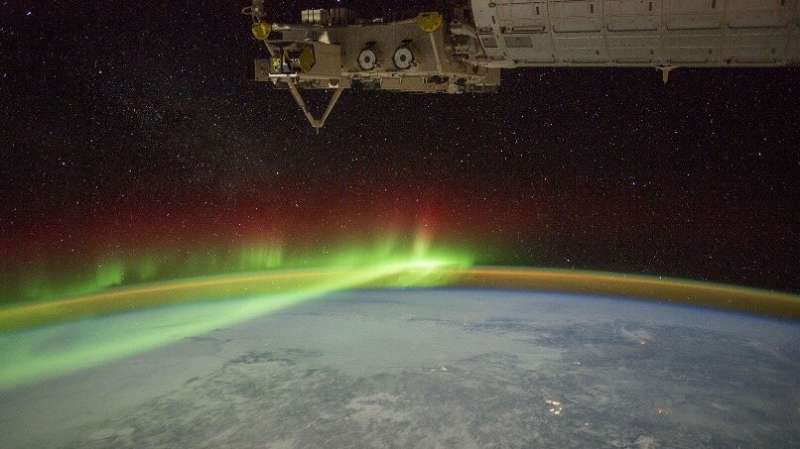
Two CubeSats, or small satellites, are on a quest to provide insight on space weather disturbances and the subsequent impact on communication signals. The dynamic duo, the Plasma Enhancements in the Ionosphere-Thermosphere Satellite (petitSat) and Scintillation Prediction Observations Research Task (SPORT), arrived at the International Space Station on Nov. 27, 2022, as part of SpaceX's 26th commercial resupply mission for NASA. Both CubeSats deployed from the space station on Dec. 29, 2022, at 8:55 a.m. EST.
Scientists on both missions are most interested in studying a layer in Earth's upper atmosphere known as the ionosphere.
New rockets, more spacecraft to take flight in 2023 from Space Coast
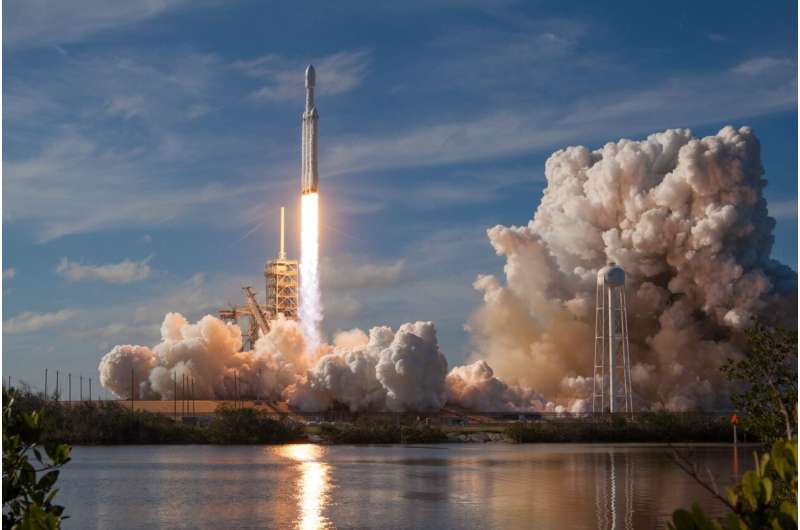
It's slated to be a busy year of rocket launches from the Space Coast with a pace that could introduce some new names and set new records.
Launch pads at both Kennedy Space Center and Cape Canaveral Space Force Station have been hitting a pace of more than one launch a week, finishing up 2022 with 57 rockets that made it to space.
That pace could be in line to nearly double as more launch service providers set up shop in Brevard County, said Frank DiBello, President and CEO of Space Florida, the state's aerospace economic development agency.
"How many can we sustain? We're building and investing, not just us alone, but the Space Force and NASA," he said. "And commercial contractors are investing in infrastructure that should be able to support 100 launches a year. That was our plan. I think we want the capability to be able to do two, two-plus a week."
A big chunk of that will come from SpaceX, which continues to roll out its Falcon 9 rockets like dominoes, but 2023 should also treat the Space Coast to several appearances of the powerhouse Falcon Heavy.
NASA: New topography satellite masts unfurl successfully
 NASA said on Wednesday that the large mast and antenna panels on its new Surface Water and Ocean Topography satellite successfully unfurled last week over a four-day process.
The satellite, also known as SWOT, was designed to capture precise measurements of the height of water in Earth's freshwater bodies and the ocean. It will also collect data on lakes and reservoirs larger than 15 ac
NASA said on Wednesday that the large mast and antenna panels on its new Surface Water and Ocean Topography satellite successfully unfurled last week over a four-day process.
The satellite, also known as SWOT, was designed to capture precise measurements of the height of water in Earth's freshwater bodies and the ocean. It will also collect data on lakes and reservoirs larger than 15 ac 
